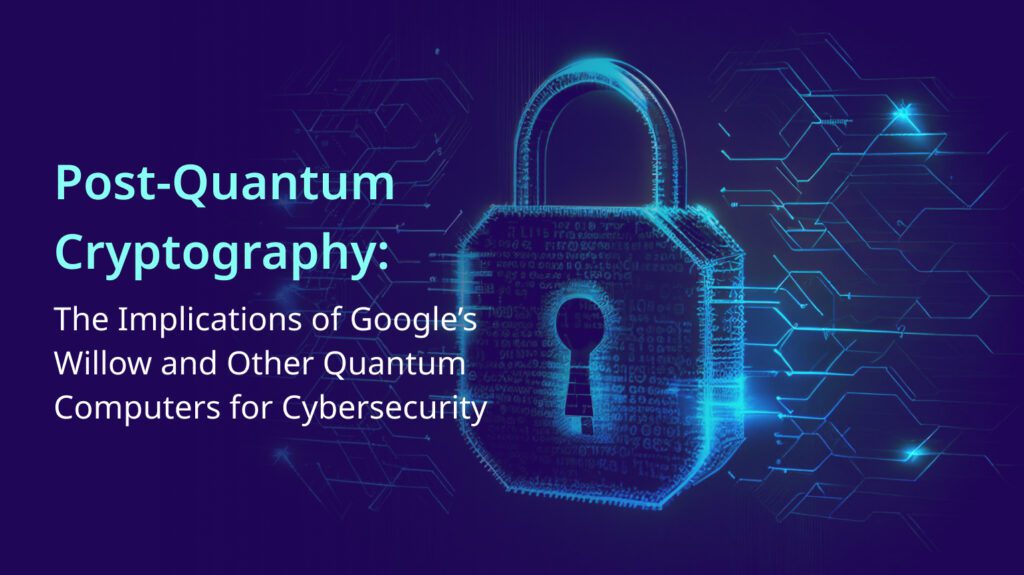The accelerating advancements in quantum computing have brought the need for post-quantum cryptography (PQC) into sharp focus. As enterprises prepare for the quantum era, significant gaps in PQC adoption persist, leaving sensitive data vulnerable to potential quantum decryption. This article explores these adoption gaps, their implications, and the strategies organizations can employ to build a quantum-resilient infrastructure.
The Urgency of Post-Quantum Cryptography Adoption
Quantum computers, once fully realized, will break widely used encryption algorithms like RSA-2048 and ECC. Adversaries are already collecting encrypted data today through “harvest now, decrypt later (HNDL)” tactics, with plans to decrypt it once quantum capabilities become available. Industries such as finance, healthcare, and critical infrastructure face particularly high stakes, as they deal with long-lived sensitive information.
“Quantum technology offers a revolutionary approach to cybersecurity,” said David Close, Chief Solutions Architect at Futurex. Tools like quantum key distribution (QKD) and quantum random number generators (QRNG) are emerging to combat these threats, offering unbreakable encryption and real-time anomaly detection.
Current State of PQC Adoption: Insights from Research
Large-Scale PQC Adoption Measurement
A recent study conducted at the National Center for Supercomputing Applications (NCSA) within the FABRIC testbed presented the first large-scale measurement of PQC adoption. The study found that:
- Only 0.029% of OpenSSH connections at NCSA (6,044 out of 20,556,816) had implemented PQC protocols.
- Major ISPs such as OARNET, GTT, Google Fiber Webpass (U.S.), and Uppsala Lans Landsting (Sweden) were among the few early adopters.
- Applications like OpenSSH and Google Chrome lead the way, while most others lag significantly behind.
Enterprise Readiness Gap
The “Quantum Waves” study by General Dynamics Information Technology highlights that:
- 50% of federal IT leaders are actively developing PQC strategies.
- 35% are defining plans and budgets but haven’t initiated implementation.
- 46% have identified cryptographic risks but lack a formal plan for PQC adoption.
These findings reflect a substantial readiness gap across both public and private sectors.
Key Challenges in PQC Adoption
1. Algorithmic Complexity
Traditional encryption algorithms were designed without quantum threats in mind. PQC algorithms like Kyber, Dilithium, and SPHINCS+, standardized by NIST, require more computational resources, which can strain legacy infrastructure.
2. Infrastructure Compatibility
Integrating PQC into existing networks demands significant upgrades. Many systems lack the flexibility to accommodate hybrid cryptographic approaches that combine classical and quantum-resistant algorithms.
3. Lack of Awareness and Expertise
PQC remains a niche domain within cybersecurity. The lack of skilled professionals and educational resources slows the pace of adoption.
4. Economic and Operational Costs
Transitioning to quantum-safe encryption involves substantial investment, not just in hardware and software but also in staff training and operational restructuring.
Strategies to Bridge the PQC Adoption Gap
1. Adopt a Phased Transition Plan
Organizations should begin with asset discovery, focusing on systems that handle sensitive, long-lived data. A phased rollout minimizes disruption while maximizing preparedness.
2. Implement Hybrid Cryptography
A hybrid model that uses both classical and quantum-resistant algorithms can ensure compatibility during the transition period. For example, deploying certificates with Elliptic Curve Cryptography (ECC) alongside Kyber or Dilithium.
3. Invest in Quantum-Safe Solutions
Platforms like Futurex CryptoHub now support NIST-standardized PQC algorithms, enabling seamless integration with existing infrastructures.
4. Collaborate with Industry and Research Bodies
Partnerships with organizations like NIST and participation in testbeds like FABRIC can help enterprises stay updated with evolving PQC standards and practices.
5. Continuous Monitoring and Testing
Quantum computing capabilities will continue to advance. Regularly updating cryptographic protocols and conducting penetration testing will ensure ongoing resilience.
Conclusion: Preparing for a Quantum-Safe Future
The transition to post-quantum cryptography is no longer a theoretical consideration but a pressing necessity. As quantum computing progresses, the vulnerabilities of classical encryption systems become more pronounced. By proactively identifying and addressing adoption gaps today, enterprises can protect sensitive data, maintain trust, and ensure operational continuity in the quantum era.
The race for quantum safety has begun. The question is not whether enterprises should adopt PQC, but how quickly they can bridge the existing gaps to secure their digital assets against quantum threats of tomorrow.


